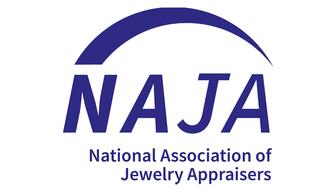Set in a Tiffany & Co. necklace, it sold for $4.2 million, the highest price and price per carat paid for a Paraíba tourmaline at auction.
HRD Antwerp Is Now Grading Lab-Grown Diamonds Like Natural
The laboratory has started grading man-made diamonds using the same color and clarity scales it applies to mined stones.

Antwerp—HRD Antwerp is now grading lab-grown diamonds using the same color and clarity scales it applies to natural stones, the laboratory confirmed to National Jeweler.
In its new man-made grading reports, which launched last week, HRD Antwerp has migrated from having just five color grades—colorless, near colorless, faint, very light and light—to the same 13 that it uses for natural diamonds—D to M, plus N-O, P-R and S-Z.
The Belgian grading lab is also switching from five clarity grades—free of inclusions (FI) to included (I)—to the same 10 applied to mined diamonds, starting with loupe clean (LC) and ranging to P3 (pique 3).
“Our aim is to serve the industry as a whole, from rough to consumers. We identified a need for better transparency and support concerning the new complications [meaning undisclosed mixing of lab-grown diamonds with natural] that arise with lab-grown diamonds,” the lab said in a statement to National Jeweler. “For this reason, we developed the set of measures explained above. The certification is just one piece of the complete puzzle of services we provide to enhance trust and transparency.”
HRD Antwerp has been issuing grading reports for lab-grown diamonds since 2013.
In the fall, it plans to add a report for finished pieces of jewelry set with man-made stones (the lab already issues reports for jewelry set with natural stones.)
The issue of how to grade lab-grown diamonds is a source of disagreement in the trade.
In October 2016, National Jeweler talked to Tom Moses, the Gemological Institute of America’s executive vice president and chief laboratory and research officer, about why the GIA uses a limited, less specific grading scale in its “Synthetic Diamond Reports” instead of the four Cs.
In the interview, Moses said that generally speaking, lab-grown diamonds are nitrogen-poor, so they are going to be of high color and clarity and not exhibit the same range of color and clarity as mined diamonds.
The GIA’s grading system, which was created long before lab-grown diamonds were prevalent, was “developed for normal mine run, which doesn’t change,” he said. “That’s nature.”
Moses’ remarks generated some back-and-forth in the story’s comments section, and a more recent editorial by JCK News Director Rob Bates—who thinks the GIA should offer the standard 4Cs scale for lab-grown diamonds—sparked a slew of online conversation over the grading of lab-grown diamonds.
Moses said in the October 2016 interview with National Jeweler
GIA spokesman Stephen Morisseau told National Jeweler last week that it will be launching new reports for man-made diamonds “in the near future,” though details on exactly what will be changing beyond the title—the FTC now says that the term “synthetic” is confusing to consumers—have not been released.
The Latest

The jeweler’s “Deep Freeze” display showcases its iconic jewelry designs frozen in a vintage icebox.

Take luxury gifting to new heights this holiday season with the jeweler’s showstopping 12-carat sphene ring.

How Jewelers of America’s 20 Under 40 are leading to ensure a brighter future for the jewelry industry.

This year's theme is “Unveiling the Depths of the Ocean.”


In its annual report, Pinterest noted an increase in searches for brooches, heirloom jewelry, and ‘80s luxury.

The 111-year-old retailer celebrated the opening of its new location in Salem, New Hampshire, which is its third store in the state.

Roseco’s 704-page catalog showcases new lab-grown diamonds, findings, tools & more—available in print or interactive digital editions.

The new catalog features its most popular chains as well as new styles.

The filmmaker’s personal F.P. Journe “FFC” prototype was the star of Phillips’ recent record-setting watch auction in New York.

The new location in the Design District pays homage to Miami’s Art Deco heritage and its connection to the ocean.

Inflations, tariffs, and politics—including the government shutdown—were among consumers’ top concerns last month.

“Longtime favorite” presenters, as well as first-time speakers, will lead talks and workshops at the annual event in Tucson next year.

Silas Smith of Meridian Metalworks won the challenge with his pendant that blends Australian and American landscapes.

The sale of the 31.68-carat, sunset-hued stone was part of Sotheby’s first series of events and auctions in Abu Dhabi.

Most customers who walk into your store this month have made up their minds. Your job is to validate their choice, Emmanuel Raheb writes.

The collection features characters and motifs from Ukrainian folklore, including an enchanted mirror and a magic egg.

MatrixGold 3.11, the newest version of the jewelry design program, offers more flexibility, precision, and creative control.

The pavilion will be part of the 2026 JA New York Spring show, scheduled for March 15 to 17.

Kadet, a 1994 National Jeweler Retailer Hall of Fame inductee, helped grow the family-owned retailer in the Chicago area and beyond.

Billed as the world’s smallest wearable, Lumia Health’s new smart earrings have a health tracker subtly embedded in the back.

Don’t let those with December birthdays feel blue. Help them celebrate their month with blue zircon, turquoise, and tanzanite.

The new pink sapphire version of the piece dances with its wearer in the brand’s “Icons After Dark” holiday campaign.

A choice that’s generated a lot of commentary, Pantone says “Cloud Dancer” marks a fresh start and encourages relaxation and creativity.

The manufacturer’s holiday campaign features a gift guide filled with trending designs and jewelry that can be personalized.

The man was charged with theft, accused of ingesting the necklace while in a jewelry store in Auckland, New Zealand.

The Florida independent expanded its store from 8,000 to 14,000 square feet, fulfilling the vision of its late co-founder, Jim Dunn.



























